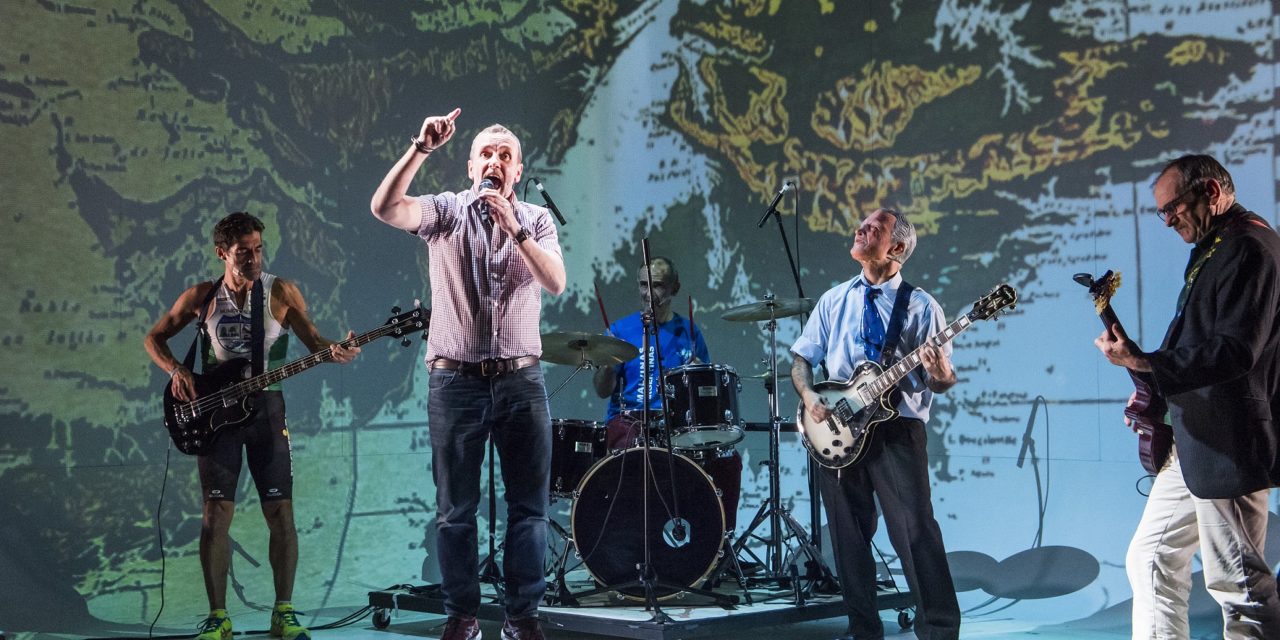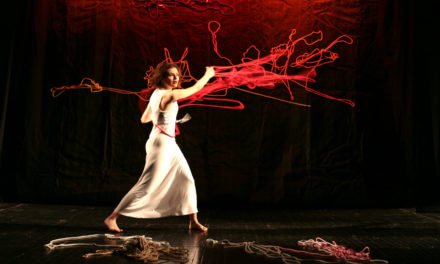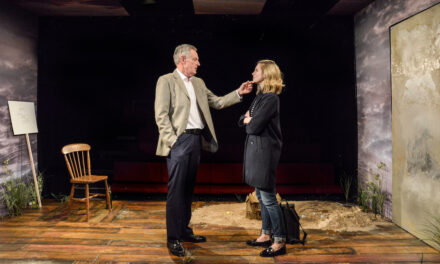When talking about translation, statistics show an alarming picture. The United Kingdom has the lowest rate of published works in translation within the EU: only around 2-3% of annual books published, including fiction and non-fiction. Literary translations were around a fifth of this figure–a fraction! To convert this into book numbers: out of the 100,000 different titles published in the UK in 1998, around 380 were from the literary domain. [i] I dare guess that probably plays in translation counted for only a fraction of this figure.
Experience shows that plays in translation commonly appear on the British stage as readings rather than full productions. It is only a small number of theatres in Britain who can invest in commissioning a translation, and take the risk of producing foreign plays (Traverse, Gate, Young Vic, Old Vic, Donmar, Almeida, Arcola as well as the Royal Court and the National Theatre). These plays are more often than not classics or modern classics. Contemporary plays in translation on the stage are rare, although there are some exceptions. (In 2009 the world premiere of Our Class by Tadeusz Slobodzianek took place at the National Theatre, preceding its premiere in Poland.)
At the Royal Court plays in translation are usually part of the theatre’s biannual International Playwrights’ season. Since 1993 the theatre has given a taster of its extensive international work by producing readings and short plays from all the countries where its play development work takes place (Brazil, Cuba, Mexico, France, Germany, Spain, Russia, Nigeria, Syria and the Nordic Countries). [ii]
The “golden year” was 2007 when the Royal Court staged two classics and five new plays in translation. Otherwise, on average they produce one or two productions of contemporary plays in translation for the theatre’s smaller, upstairs stage, and several others are read as part of a festival or focused event of some kind. In 2011, it was two full productions: one play from Latvia: Remembrance Day by Aleksey Scherbak, translated by Rory Mullarkey, and one play from Columbia: Our Private Life by Pedro Miguel Rozo, translated by Simon Scardifield. In the previous year (2010) the Royal Court premiered 18 full productions, none of which was in translation. [iii]
At the National in 2010, out of its 20 premieres, 2 were as a result of some sort of translation process. Both of them were “new versions” of classics: Danton’s Death by Büchner “in a new version by Howard Brenton”; and The White Guard by Bulgakov “in a new version by Andrew Upton”. The literal translators were not acknowledged on the theatre’s website. [iv]
It is worth noting that both plays were written in a language (German, Russian) for which translators or playwright-translators could be found. The fact that instead of this way of commissioning a new translation, the National chose the route of the collaborative translation shows that this process at the National is not happening out of necessity but is part of the theatre’s artistic policy. “The reason that we do it mostly the way we do is because ultimately we feel that what we want to create is a play that would work for a production here, that the actors will feel they can speak the dialogue, and that there isn’t a sense that what we are presenting is an alien artefact”, [v] explains Sebastian Born, literary manager of the National Theatre in London. Whilst he is aware of the challenges a translation can pose, Born is primarily concerned with the National’s audience (who mainly go there for “meaningful entertainment”). In his opinion, a good translation has to do both: “preserve the otherness where the play comes from, but on the other hand not create a barrier for the English audience.” Accessibility, audience engagement, and performability are the main criteria for Born for a good translation.
Interestingly, performability is the first and foremost criterion for a good translation for Christopher Campbell, literary manager at the Royal Court Theatre (London): “The simple answer to it is: a translation that you can produce in your theatre, that’s a good translation. Everything else for me is secondary to that, and that’s partly because of the position I occupy, that my primary responsibility is to put things on the stage in the theatre. Of course, there are more complex ways of answering the question: carrying as much as possible of the meaning, the sense, the significance of the original work, making it sound as if it was written in the language on which is performed – it is often a virtue, not always: sometimes there is a value in strangeness. Successfully communicating something of the original intention, for the audience of the translation, I think that has to be the secondary answer. But the primary answer undoubtedly is: a good translation is what I can produce.” [vi]
One of the main criteria of performability according to Campbell is the translation’s speakability: “It has to have an interest in the language, but it has to sit convincingly in the mouth of an English actor. Very often there are simply too many words in the English translation, or it doesn’t sound credible.” By credibility, Campbell means that it creates a world within which the words on stage sound valid “from an English mouth.” It is worth to note here that these valid criteria can be also problematic, as Patrice Pavis warns, “once it degenerates into a norm of “playing well” or verisimilitude. The danger of banalization lurking under cover of the text that “speaks well” (bien en bouche) lies in wait for the mise en scène.” [vii] These criteria also serve well only one particular type of theatre, and seem to be almost meaningless when trying to employ them in post-dramatic theatre or non-naturalistic directing styles. So perhaps it is wiser to look further than speakability and establish what Pavis suggests: “what is much more important than the simple criterion of the “well-spoken” is the convincing adequacy of speech and gesture, which we may call the language-body.” [viii] Pavis mentions another important criterion for translation of the stage, that Penny Black, translator emphasizes as well: the economy of the dramatic text (as opposed to, for instance, the descriptive qualities of prose). [ix]
Performability is a very difficult term to define theoretically. [x] To make matters more complicated it is sometimes connected to the play’s marketability, [xi] however it is not a term one can ignore. The live nature of the theatre performance means that the audience is an immediate witness, who has no possibility during the event to stop, pause, rewind or just ask for some more explanation. [xii] The action on the stage (or in the performance space) has to be clear enough for the audience to convey meaning, intentions, emotions, subtext etc., and evoke their active participation in the event. If that is lost, it is lost forever. It is worth noting the similarity of the aims of both theatres (performability of the translation), and the difference in the way they set out to achieve this in terms of their choice of the translation process.
Campbell emphasizes that it is the Royal Court’s artistic policy that they do not work from literals but commission translators: “Here at the Royal Court we do not employ literal translators. It is our policy not to do that because we are encouraging translators to engage with the language directly. We use a wider range of people, and we are less demanding.” Campbell reassures that “less demanding” doesn’t mean compromising the quality of the translation, but as the Royal Court is primarily producing new works, a certain level of “rawness” is acceptable, and the theatre’s audience is aware of this. “Here we have a slightly rougher aesthetic,” as Campbell sums it up. Campbell as a translator and dramaturg who has been involved in collaborative translation many times is aware of the possibilities this kind of translation process can offer (greater choice of plays available, a fruitful conversation between the two playwrights and the literal translator that can enrich the work greatly) and its constraints (“it inherently devalues the work of the so-called literal translator,” and that to enable this three-way conversation to happen, a theatre needs resources). Yet he argues for translation proper that gives a “more direct connection with the original.” “When you’re doing it directly, then you do have greater constraints of who speaks that language, or need to choose a writer who speaks the language, but I think you have probably a more direct connection with the original. And you also have, if you like, a purer version.”
In contrast, Born emphasizes that the National prefers to work with playwrights because in his opinion only they can enable the translation to work on the stage. In an ideal case, the playwright is a fluent speaker of the language of the original. Unfortunately, this is rare, although there are excellent exceptions (he mentions Michael Frayn). “For us it’s about: are there translators who have what we feel are the skills of a playwright? You can argue that some translators do, some don’t. We tend to go the literal translation – playwright route.”
Campbell, who previously worked for the National is aware of this argument, and in his opinion, one of the reasons for this preference lies in the nature of British theatre, that it is (compared to theatre on the continent) logo-centric: “in British theatre words spoken on stage have a supreme value. It is to do with the feeling we have that the words on the stage would not be adequate unless they are written by a playwright.”
The ideal scenario for Campbell is also to give the original to a playwright-translator, who speaks the SL. “The advantage of a playwright translation is that you have the creative imagination there and the play is being filtered through directly. And that can give rise to wonderful things. It very often happens that the play will sound like a play by the playwright, but that’s because that was what attracted him to the play in the first place.
It is interesting to note the second similarity in the two theatres’ values: out of the three models: translation proper, translation proper by a playwright, and collaborative translation, both literary managers rank the highest translation proper by a playwright. When they have to make a compromise, however, they “sacrifice” different things: the National insists on having a playwright, therefore loosens the relationship with the original, whereas the Royal Court seeks to maintain a direct dialogue with the original and therefore does not insist on a playwright, but will accept a translation by a professional translator.
The Three Different Models
When a theatre (or a company) decides to use a produce a play in translation, one of the first decisions to make is whether to use an already existing translation (if there is any) or commission a new translation. If an already existing translation is going to be used, it is often the dramaturg’s responsibility to trace down the possible existing translations, read them, and discuss them with the artistic director or director of the show in order to make a decision of which one of them would be suitable for the production in mind. [xiii] Once the translation has been chosen, it still needs to be prepared (perhaps refreshed and edited) for the production. The dramaturgical role for this process is very similar to the script preparation process that goes on when working on classics and/or modern classics; it’s a very classical dramaturgical task.
When a theatre decides to commission a new translation, it has three choices:
1. To commission a playwright-translator, who is fluent in both the source language and the target language, and is able to create a literary translation of the original, that works well on the stage.
2. To commission a professional translator (who in an ideal case is familiar with the practicalities of theatre, and can be ready to help the company during the rehearsal period).
3. To commission a literal translation and give it to a playwright to make his/her version of it. In order to make this successfully happen, the person who makes the literal translation and the version maker have access to each other, so the version maker can make informed choices. In an ideal case, they are also in touch with the original author of the play as well.
In contemporary dramaturgical practices, the same aims (performability, speakability) and values (to have a playwright-translator) lead to two very different translation practices. The National Theatre compromises the direct contact with the original for a playwright’s voice; whereas the Royal Court retains that and would rather sacrifice the skills a playwright may offer (for the process). Both translation paradigms are interlinked by various other processes relating to the intersemiotic translation that is happening at the same time. During both processes, very strong dramaturgical work can be detected. In the collaborative translation process this dramaturgical work shifts between the literary manager, playwright-adapter, and the director. In the translation proper process, it is shared between the director and the literary manager/dramaturg. Throughout the various dramaturgical jobs in the process, there is a strong role that is concerned with communication, facilitation and acting as a mediator.
This article was first published in in The Routledge Companion to Dramaturgy in 2014. An extended version of it, including case studies can be read in Dramaturgy in the Making.Reposted with permission.
Endnotes:
i. Anderman, p.15, and Hejazi.
ii. Source: http://www.royalcourttheatre.com/playwriting/international-playwriting/international-productions. (Accessed: 24 March 2013.)
iii. Source: http://www.royalcourttheatre.com/whats-on (Accessed: 24 March 2013.)
iv. Source: http://www.nationaltheatre.org.uk/63741/whats-on-extras/2010-at-the-national-theatre.html (Accessed: 15 April March 2011.)
v. From here on the S.B. quotes are from Katalin Trencsényi: Interview with Sebastian Born, unpublished interview made in London, 14.03.2011.
vi. From here on the C.C. quotes are from Katalin Trencsényi: Interview with Christopher Campbell, unpublished interview made in London, 27.01.2011.
vii. Pavis, p.143.
viii. Ibid., p.143.
ix. C.f.: ‘Labours of Love: Interview with Penny Black on translation for the stage by Katalin Trencsényi’, Journal of Adaptation in Film & Performance, Vol. 4, No. 2. 2011, pp.189-200.
x. C.f: Johnston.
xi. C.f: Finburgh.
xii. C.f.: Anderman.
xiii. C.f: Caird.
This post was written by the author in their personal capacity.The opinions expressed in this article are the author’s own and do not reflect the view of The Theatre Times, their staff or collaborators.
This post was written by Katalin Trencsényi.
The views expressed here belong to the author and do not necessarily reflect our views and opinions.


















